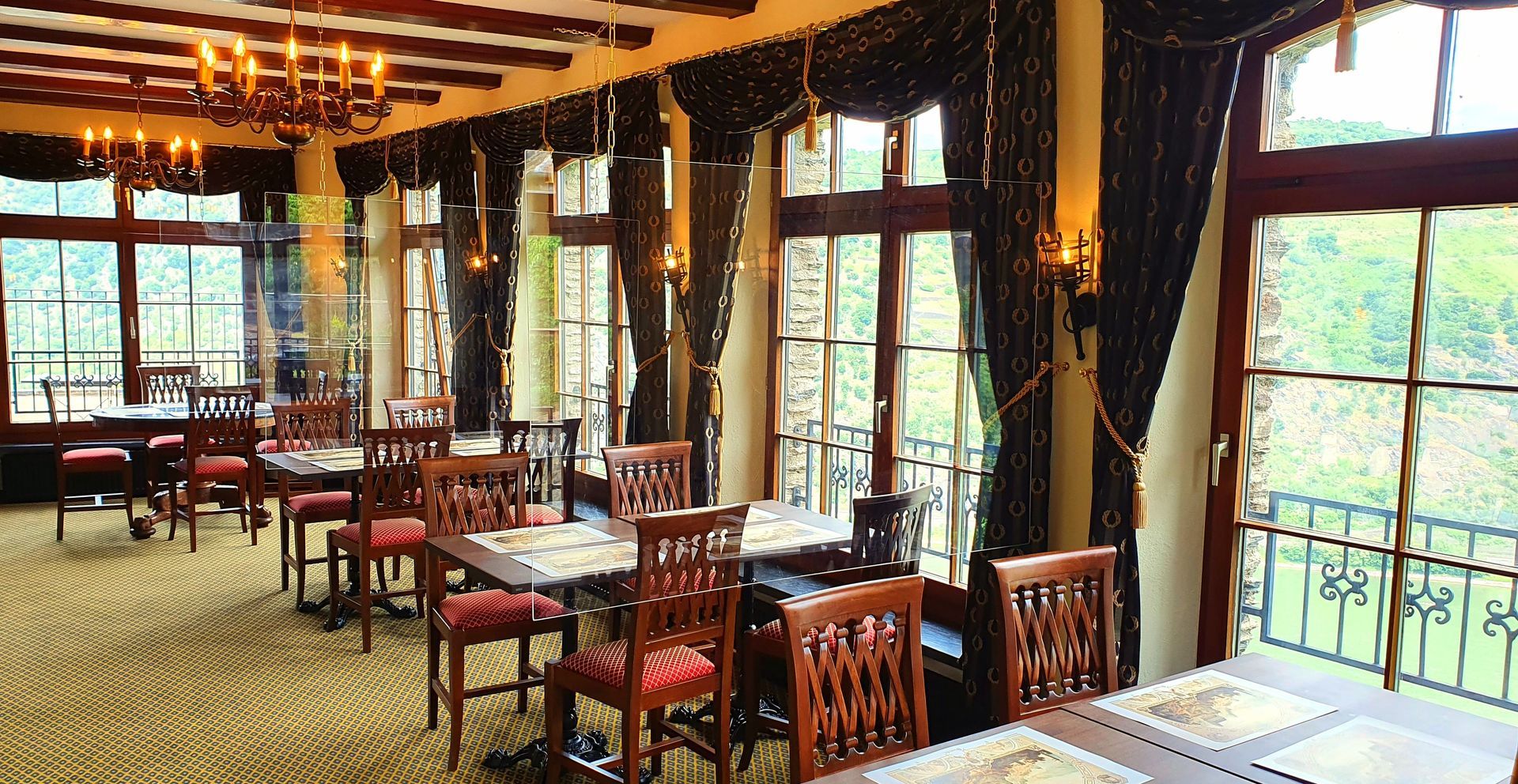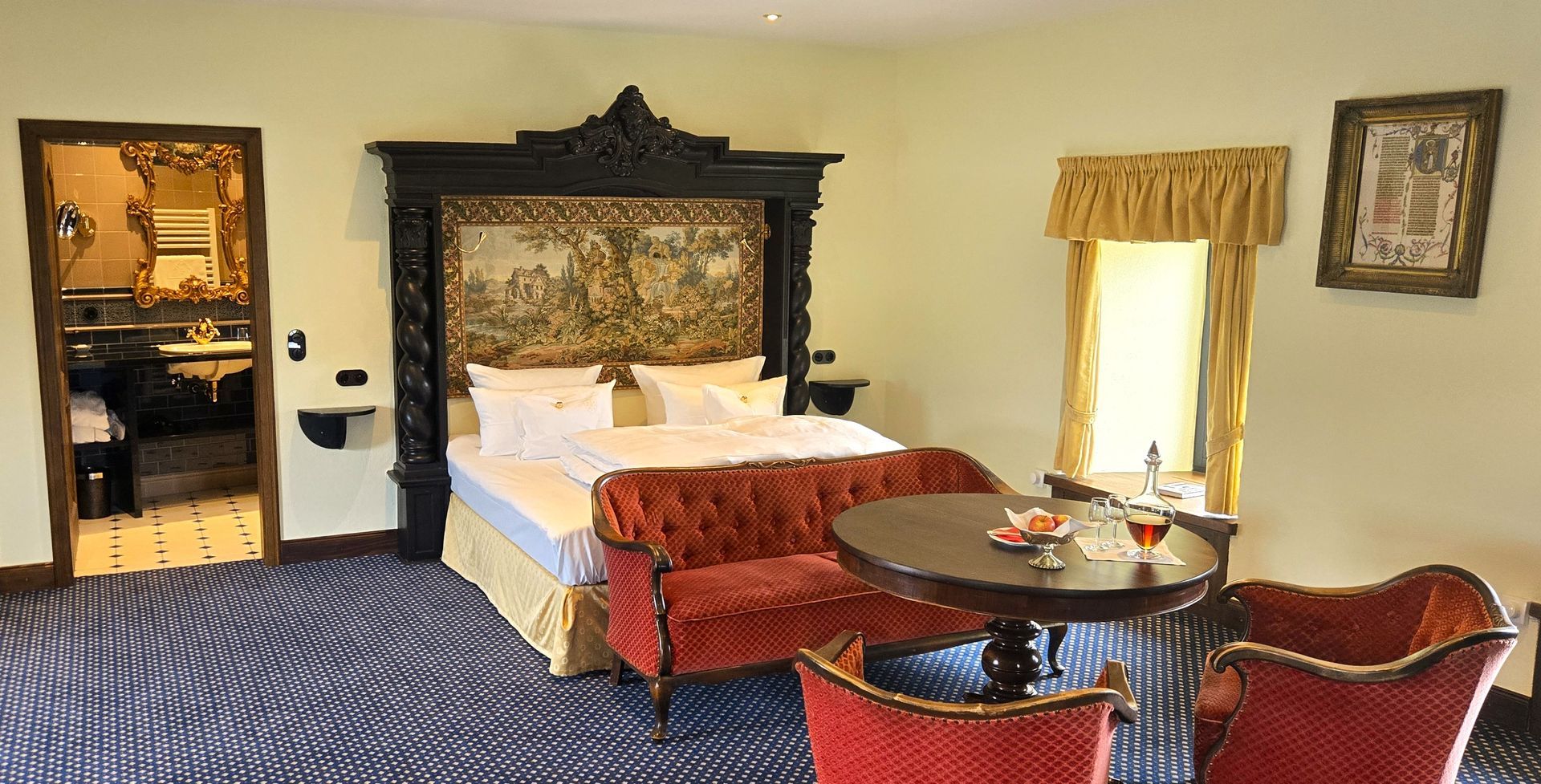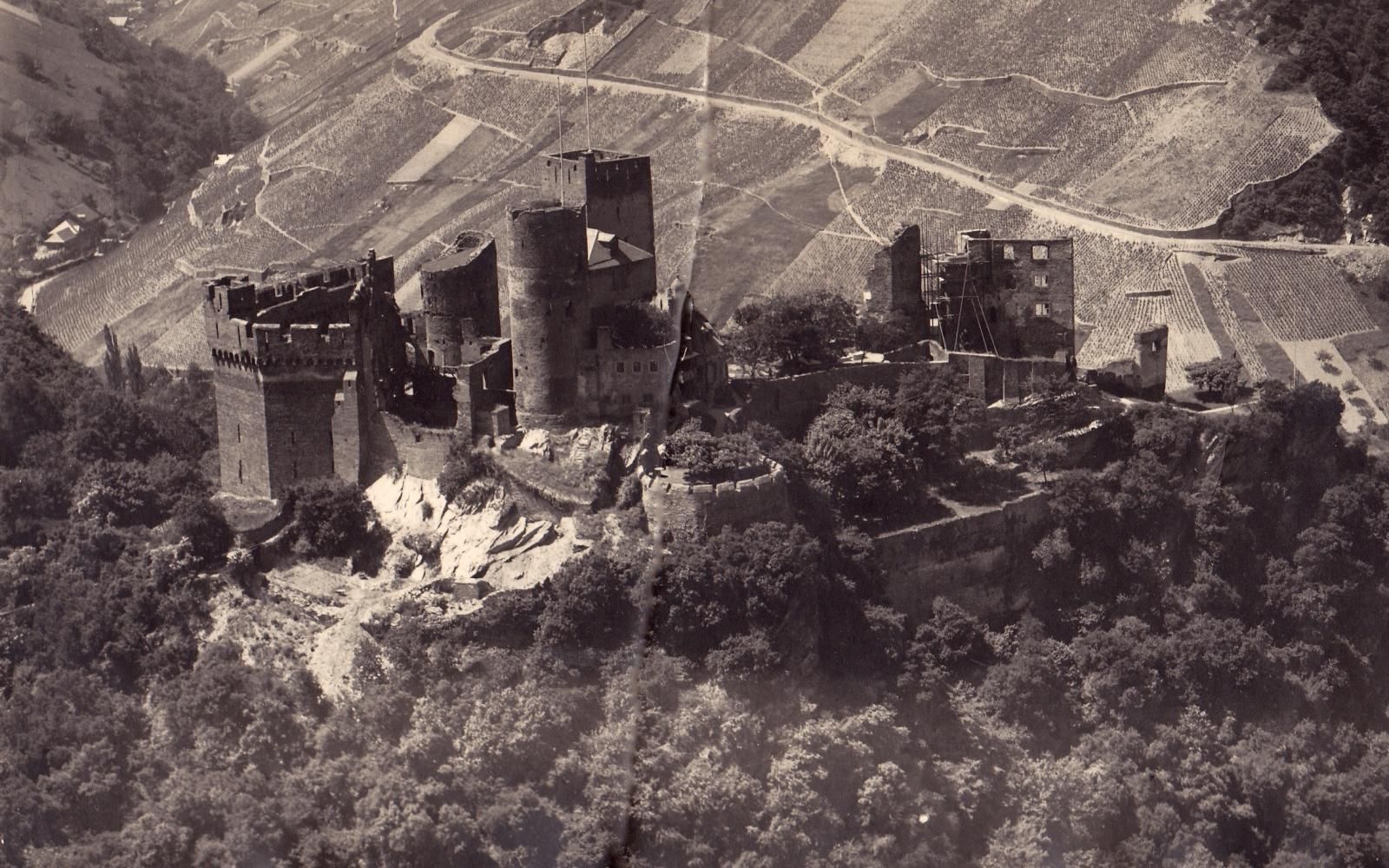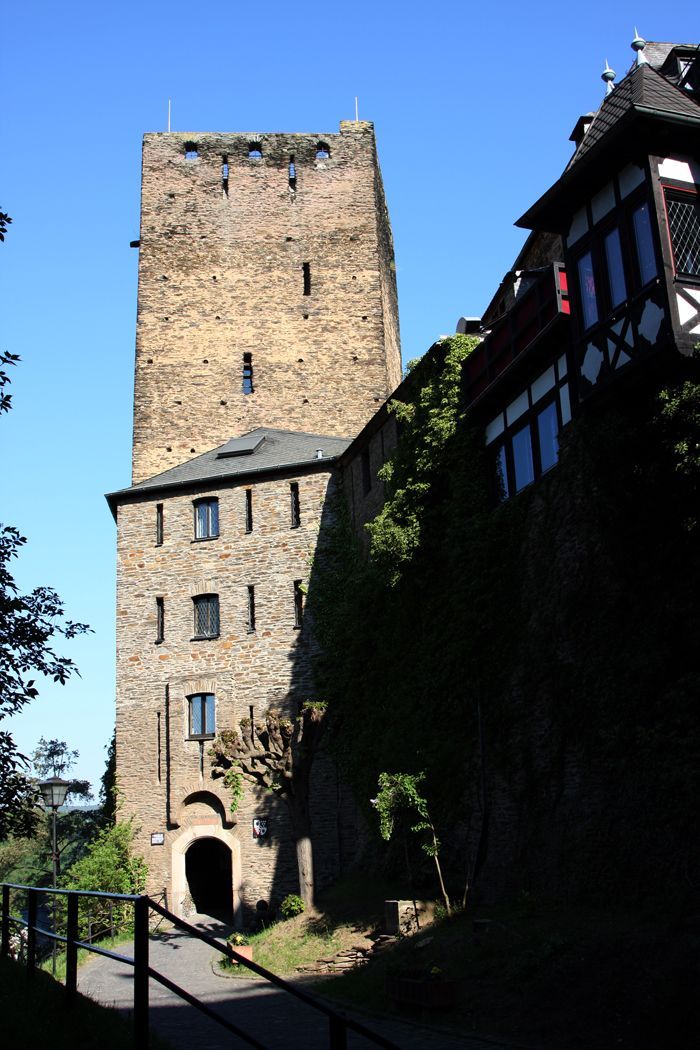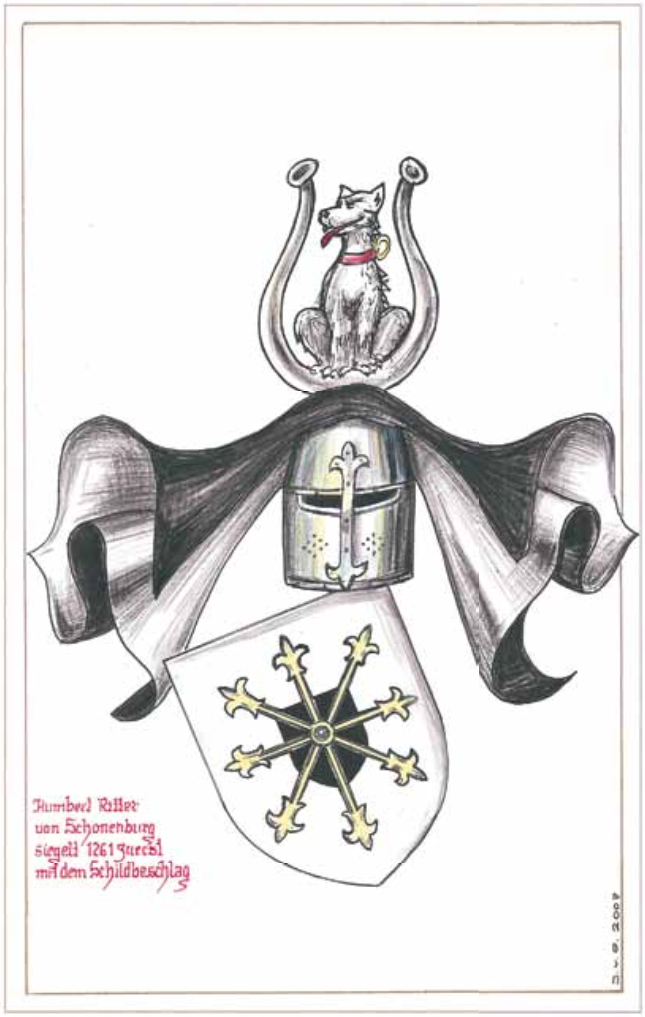
Influence on the local church.
In 1282, Friedrich von Ehrenberg declared that only Emmelrich I. von Schönburg held the patronage rights to St. Martin in Oberwesel as a fief. When one could no longer enjoy the privileges of a bailiff, one at least wanted to exert influence in the community—starting with the ecclesiastical foundations. Emmelrich went too far by imprisoning rebellious provosts of the Frauenstift in chains. In 1294, he and his sons Heinrich and Johann received absolution from the ban they had fallen under—until the somewhat tortured-looking provosts were allowed to see the light of day again.
Incited by the Schönburgers
At least the Schönburgers issued directives to the Frauenstift. They presented Count Bertolf von Katzenellenbogen as a provost, who reciprocated in 1301 with a document featuring three beautiful seals, in which he promised to protect the Schönburgers in his own way.
In 1303, Archbishop Dietrich III, Count of Nassau, established a collegiate foundation at the church of St. Martin. Knights Merbodo and Tilmann von Schönburg were involved from the beginning. By 1306, the "common and uncommon" fiefs of the Schönburgers threatened to become chaotic. A family contract was quickly established among four Schönburg knights. Moreover, Werner von Schönburg (one of those with the shields) had something personal in mind, as he married Merbodo's sister (with the shield decoration in her coat of arms).
Archbishop Balduin of Trier intervenes
The castle, which was increasingly expanding at the beginning of the 14th century (by this time populated by eight families), came into the focus of this Archbishop of Trier when Balduin, Count of Lützelburg, incorporated the city of "Wesel" in 1312. From the imperial side, Balduin had nothing to fear—after all, Emperor Heinrich, who had been reigning since that same year, was his well-disposed brother.
The fact that the "Schönburger Hof," the town house of the lords of the castle, suddenly fell within the purview of this powerful Trier figure, was less favorable to the Schönburgers than his prudent church policies. Emmelrich von Schönburg, patron of the Stift of St. Martin in 1325, acted very diplomatically for good measure.
The castle is bursting at the seams: murder and mayhem
Friedrich von Schönburg, simultaneously the burgrave of Lahnstein, along with his brothers—the knight Werner, known as von Randeck, and Guda—along with a large clan bearing shields in their coats of arms, populated the older northern part of the castle. The Schönburg lords with the decorated central shield—also referred to as the scepter wheel or lily reel—filled the newer southern area. Additionally, other knightly families, largely also calling themselves Schönburgers, joined them. In total: a dreadful crowd of 26 knights with their retinues!
Drawings and text: Jochen von Osterroth

New Paragraph



